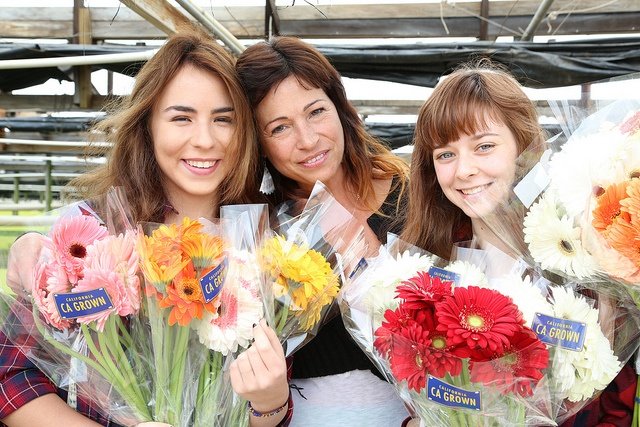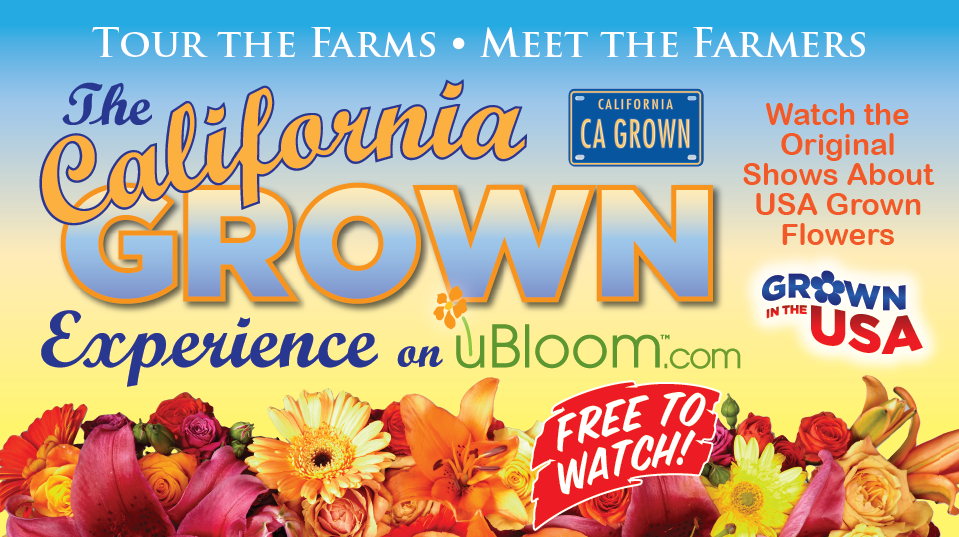3 Threats Facing the Future of U.S. Flower Farming!
This is a guest post by Kasey Cronquist, CEO/Ambassador for the California Cut Flower Commission. As the CEO/Ambassador of the CCFC, a state agency, Kasey is responsible for representing all of California's flower farmers through the development of promotion and advocacy efforts.You can receive a free digital copy of California's Farm & Flower Guide Subscribe to Kasey's weekly blog, "Field Position" and follow him on Twitter. It was almost a year ago now that I stood before an audience of 200+ flower farmers in Tacoma, Washington as their keynote for the annual Association of Specialty Cut Flower Growers conference.It was an honor and privilege that I'll never forget.My presentation, "Heart & Soil: Reclaiming America's Cut Flower Industry" began with three very specific examples of the common threats that all flower farmers in the United States face when trying to compete for business of selling their flowers here in the U.S. Our farms still face these same three threats today:1. The Threat of AnonymityOne of the reasons I was invited to speak, was to share and explain California's flower farmers' success with labeling their flowers and greens "CA Grown." Because we knew from consumer research that 85% of people had no idea where flowers came from, a label based on origin would help begin the education process. With almost 80% of all flowers sold in the United States now being imported, primarily from South America, it was the anonymity of where flowers were grown that was preventing the kind of market access that our farms wanted and needed and keeping consumers from the flowers they would otherwise prefer to buy.2. The Threat of Increasing Imports I also knew that most people, including flower farmers, have no idea the extent of the market changes that have taken place over the past twenty years. Today's California's flower farmers have had to continue to significantly change how they do business in order to compete against the increasing pressures of lower priced imports. Others have simply given up. Since 1990, California has lost over half of the flower farmers it had. Many other states that had high producing flower farming communities have all been wiped out. While the loss of production is difficult to accept, the real tragedy is the loss of the "generational intelligence" by those third, fourth, fifth generation flower farmer that knew what it took to grow a beautiful bloom right there within their community, employing neighbors and contributing to the local economy. In my presentation, I shared how that production "shift" took place and how much "field position" we had lost to imports over the last twenty years.3. The Threat of Doing NothingUltimately, my message was one of optimism. In my opinion, the future of our U.S. flower farmers is bright. How can that be, after sharing all of those facts? I highlighted three reasons why now was the time for the flower farmers of America to do something about the threats they face. Here are those three reasons:
I also knew that most people, including flower farmers, have no idea the extent of the market changes that have taken place over the past twenty years. Today's California's flower farmers have had to continue to significantly change how they do business in order to compete against the increasing pressures of lower priced imports. Others have simply given up. Since 1990, California has lost over half of the flower farmers it had. Many other states that had high producing flower farming communities have all been wiped out. While the loss of production is difficult to accept, the real tragedy is the loss of the "generational intelligence" by those third, fourth, fifth generation flower farmer that knew what it took to grow a beautiful bloom right there within their community, employing neighbors and contributing to the local economy. In my presentation, I shared how that production "shift" took place and how much "field position" we had lost to imports over the last twenty years.3. The Threat of Doing NothingUltimately, my message was one of optimism. In my opinion, the future of our U.S. flower farmers is bright. How can that be, after sharing all of those facts? I highlighted three reasons why now was the time for the flower farmers of America to do something about the threats they face. Here are those three reasons: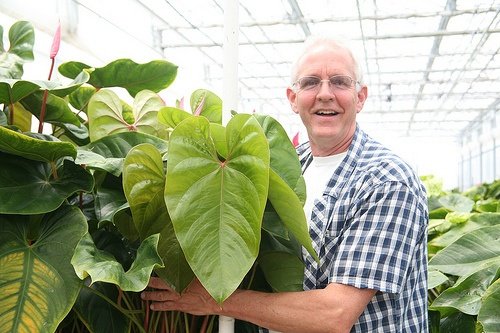 Be who you are, "America's Flower Farmers." If you're growing flowers in the United States, that as an advantage that no one can take that away from you. Promote that!
Be who you are, "America's Flower Farmers." If you're growing flowers in the United States, that as an advantage that no one can take that away from you. Promote that!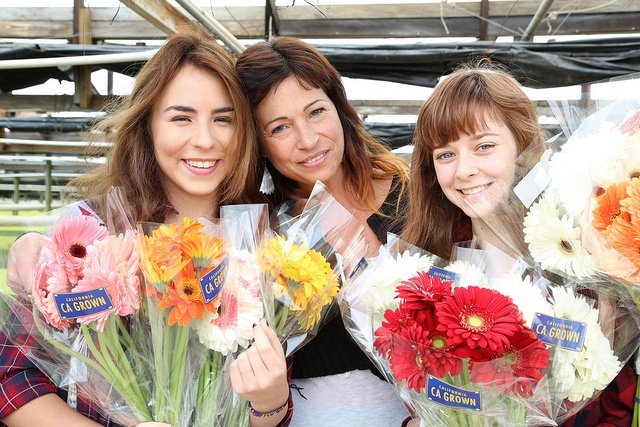 Label everything. Origin based branding helps consumers find the flowers they are looking for; labeling our flowers locally grown, by state (CA Grown) or American Grown. This is a must.Take to social media. Highlight your flowers, ask for the support from friends, family and consumers to buy American Grown flowers. Every purchase makes a difference.While my message largely remains the same, a lot has changed in a year since that presentation in Tacoma.The threats remain the same, but the future has gotten brighter for our domestic flower farmers.The growing trend and demand for American Grown flowers has only improved. Here are just a few of those examples:
Label everything. Origin based branding helps consumers find the flowers they are looking for; labeling our flowers locally grown, by state (CA Grown) or American Grown. This is a must.Take to social media. Highlight your flowers, ask for the support from friends, family and consumers to buy American Grown flowers. Every purchase makes a difference.While my message largely remains the same, a lot has changed in a year since that presentation in Tacoma.The threats remain the same, but the future has gotten brighter for our domestic flower farmers.The growing trend and demand for American Grown flowers has only improved. Here are just a few of those examples:
The success of the California Grown Experience series here on uBloom has certainly allowed the industry and consumers alike to see our farms first hand and be inspired by the hard working folks that are growing these beautiful American Grown blooms with extreme passion.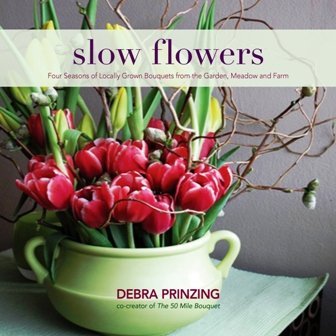 The successful release and popularity of the book "Slow Flowers" by Debra Prinzing has also helped to further contextualize the locally grown movement for flowers.The San Francisco Flower and Garden Show recently announced that they would only be featuring cut flowers grown in California at their show in 2014.Major retailers are also seizing the opportunity to drive demand by highlighting the flowers they sell that are grown locally. A recent "Meet the Farmer" event at a Safeway in Danville, CA, was a first of its kind for the floral industry.The list goes on, but those are just a few examples of the changing face of the floral industry that I believe provide evidence that the future for America's family flower farmers is a bright one. Working together to educate and encourage consumers to buy local blooms is not a hard sell. People want their flowers to be as fresh as possible and the demand of locally grown food continues to skyrocket, begging the question; why wouldn't people want the flowers in the center of their tables to be as local as the food on their plate?Does the state of flower farming the United States surprise you?What examples have you seen with the growing demand for locally grown flowers? What more can America's flower farmers be doing to highlight the value they bring our country, their community and the economy?
The successful release and popularity of the book "Slow Flowers" by Debra Prinzing has also helped to further contextualize the locally grown movement for flowers.The San Francisco Flower and Garden Show recently announced that they would only be featuring cut flowers grown in California at their show in 2014.Major retailers are also seizing the opportunity to drive demand by highlighting the flowers they sell that are grown locally. A recent "Meet the Farmer" event at a Safeway in Danville, CA, was a first of its kind for the floral industry.The list goes on, but those are just a few examples of the changing face of the floral industry that I believe provide evidence that the future for America's family flower farmers is a bright one. Working together to educate and encourage consumers to buy local blooms is not a hard sell. People want their flowers to be as fresh as possible and the demand of locally grown food continues to skyrocket, begging the question; why wouldn't people want the flowers in the center of their tables to be as local as the food on their plate?Does the state of flower farming the United States surprise you?What examples have you seen with the growing demand for locally grown flowers? What more can America's flower farmers be doing to highlight the value they bring our country, their community and the economy?

